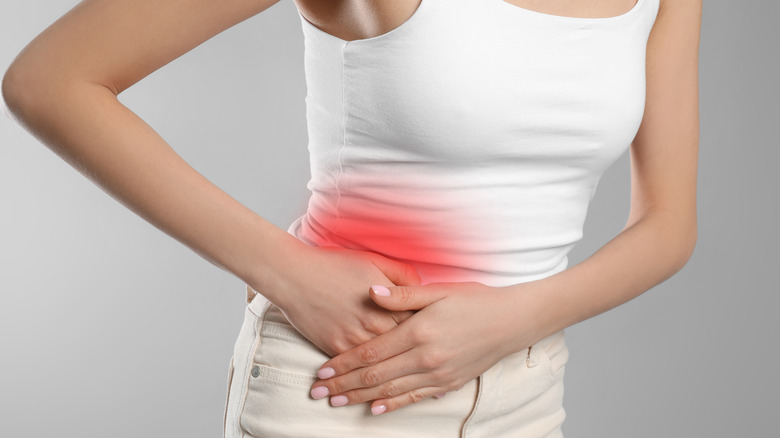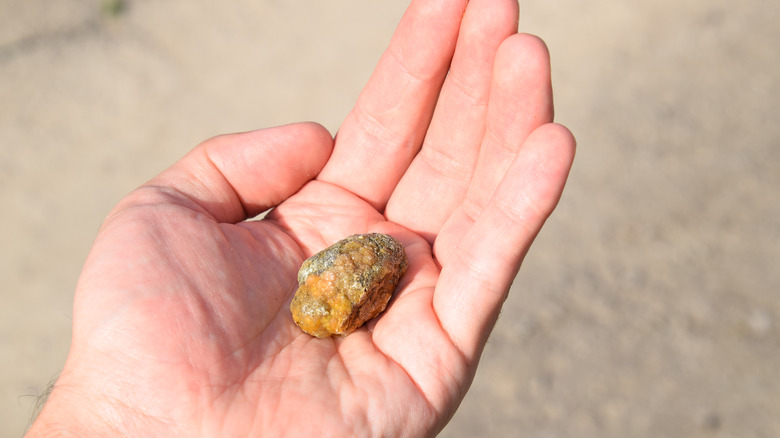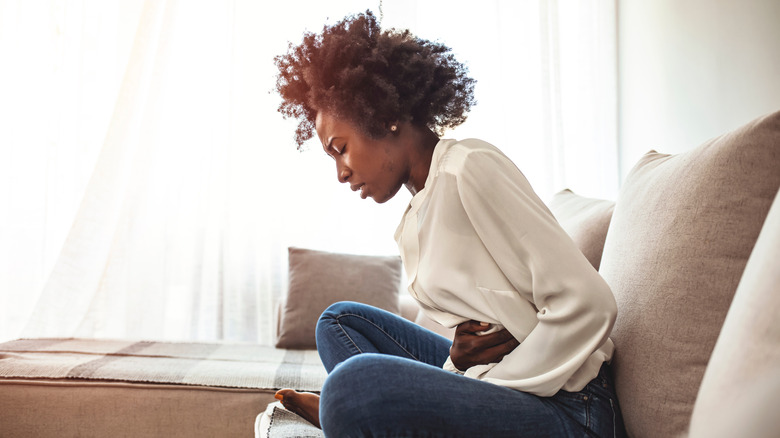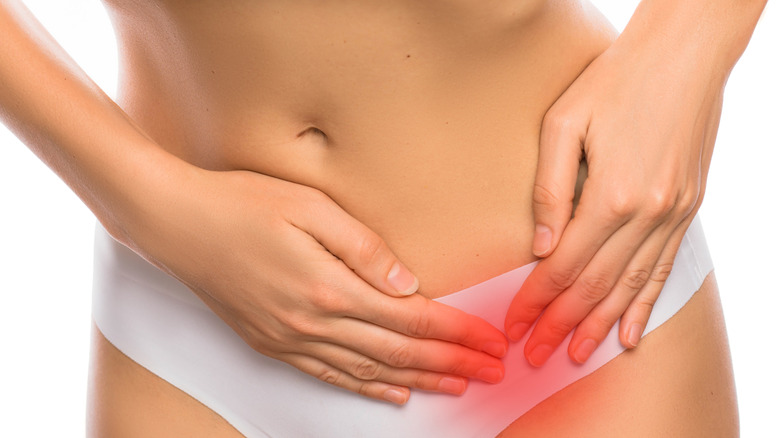What Does It Mean When The Right Side Of Your Abdomen Hurts?
Right-side abdominal pain can be terrifying. You may be thinking that something is wrong with your liver, kidneys, gallbladder, or ovaries, but that's not always the case. Sometimes, this symptom is due to appendicitis, or inflammation of the appendix. In addition to lower abdominal pain, you may experience nausea, vomiting, gas, bloating, and changes in bowel habits, explains the Mayo Clinic. Another potential symptom is low-grade fever. Appendicitis usually occurs in children, teens, and young adults, but it can affect people of all ages.
Pain in the right side of the abdomen can also be due to gas or constipation, says Dr. Matthew Souder (via Geisinger). If that's your case, the pain may come and go and should subside shortly after a bowel movement. But there are situations where right-side abdominal pain indicates a more serious problem, and that's why you should take note of your symptoms. Dr. Souder recommends seeking medical attention if you're having severe pain, bloody stools, jaundice, fever, or abdominal swelling. With that being said, let's see some of the most common causes of right-side abdominal pain.
You might have gallstones or kidney stones
Both gallstones and kidney stones can cause pain in the right side of the abdomen, Dr. Matthew Souder told Geisinger. Estimates show that about one in 10 people will get kidney stones at some point in life, notes the Mayo Clinic. This condition appears to be more common in adults who don't drink enough water or have certain diseases, such as diabetes, gout, or ulcerative colitis. Genetics play a role, too. A diet rich in meat, sodium, or sugar can increase your risk as well.
Kidney stone pain is often accompanied by lower back pain, nausea, vomiting, and bloody or cloudy urine, explains the Mayo Clinic. You may also experience pain when urinating. These symptoms can last anywhere between a few days and several weeks, depending on when you pass the stone. Larger stones may not pass on their own and must be surgically removed, says Dr. Souder.
Gallstones, on the other hand, may cause pain between the shoulder blades, as well as in the upper right area of the abdomen. Other symptoms include pain in the right shoulder, nausea, and vomiting, according to the Mayo Clinic. The pain and discomfort can last several minutes to a few hours. In severe cases, gallstones can cause jaundice and high fever, but it's possible to experience no symptoms at all.
Right-side abdominal pain may be a sign of IBS
If your digestive system isn't working properly, you may experience pain in the right side of your tummy. A possible cause is irritable bowel syndrome (IBS), a condition that affects about 10% to 15% of the U.S. population (via the American College of Gastroenterology). This functional disorder can lead to changes in bowel habits, as well as muscle aches, back pain, fatigue, and difficulty urinating.
"Factors like food, stress, and hormones can trigger IBS, causing symptoms like cramps, pain, bloating, diarrhea, and constipation," notes Dr. Matthew Souder (via Geisinger). If you have right side abdominal pain due to IBS, you may have flare-ups every few days. Gallbladder pain, on the other hand, tends to occur every few weeks or less often, explains Dr. Robin Spiller (via United European Gastroenterology).
The American College of Gastroenterology points out that IBS cannot be cured. Your only option is to keep it under control through dietary changes and medications. Depending on your symptoms, doctors may prescribe antidepressants, laxatives, antibiotics, or drugs that help relax the small bowels and relieve stomach pain. Dietary changes, such as cutting down on lactose and eating more fiber, can make all the difference. Your best bet is to try an elimination diet to see how your body reacts to different foods.
Ovarian cysts can cause pain in the lower right abdomen
In some cases, pain on either side of the lower abdomen could be a sign that you have ovarian cysts. Chances are, you'll experience a dull or sharp pain in the pelvic area, along with bloating and changes in menstrual flow. Some women may also have difficulty urinating, explains Medical News Today. Ovarian cysts tend to occur in premenopausal women and may be due to hormonal problems, endometriosis, or pelvic infections (via the Office on Women's Health). If you develop this condition after menopause, you may be at higher risk for ovarian cancer.
Under normal conditions, ovarian cysts are not a medical emergency. However, some may cause fever, dizziness, heavy bleeding, vomiting, or severe pain in the lower abdomen. These symptoms require medical attention, points out the Office on Women's Health. If you only have mild to moderate pain and discomfort, your doctor may prescribe medications or birth control pills.
Lower right abdominal pain may also be due to endometriosis, pelvic inflammatory disease, or hernias, according to Medical News Today. If you feel pain in the upper abdomen, there might be something wrong with your liver, gallbladder, or digestive tract (per Gastroenterology Associates). For example, hepatitis and peptic ulcers may cause pain in the right upper quadrant. The best thing you can do is to keep an eye on your symptoms and see a doctor sooner rather than later.



